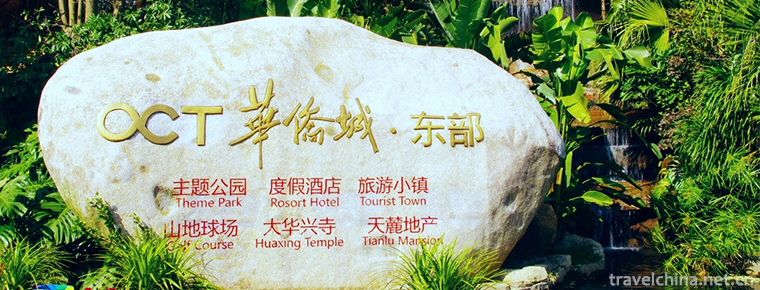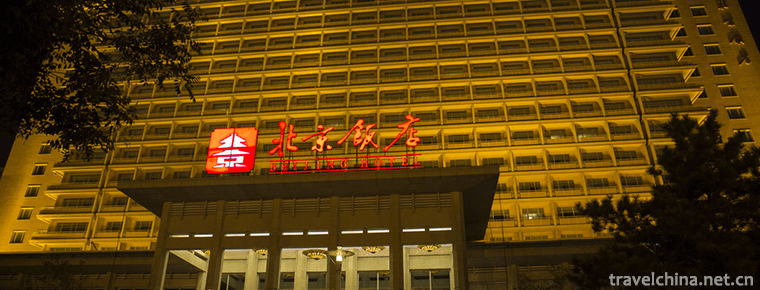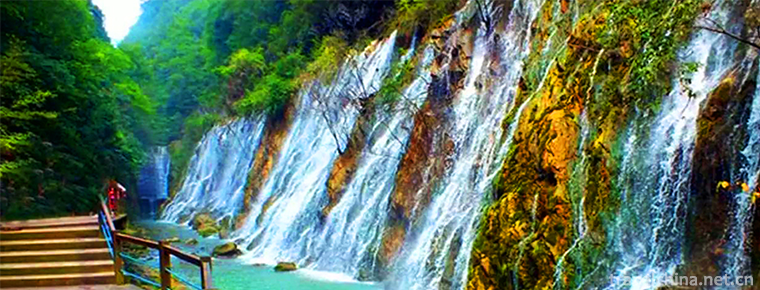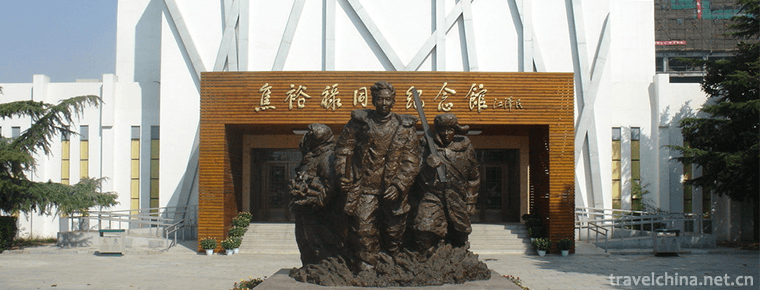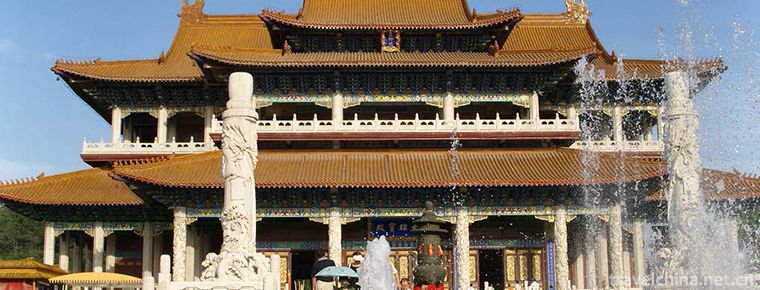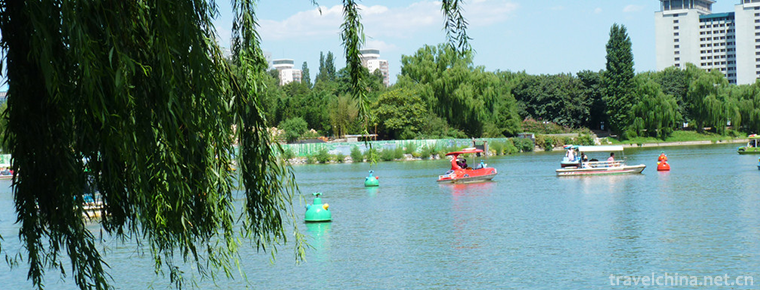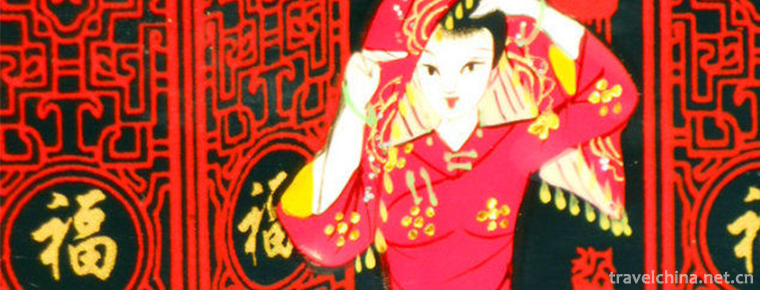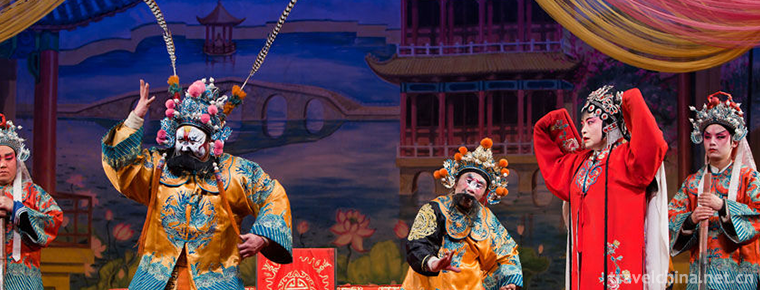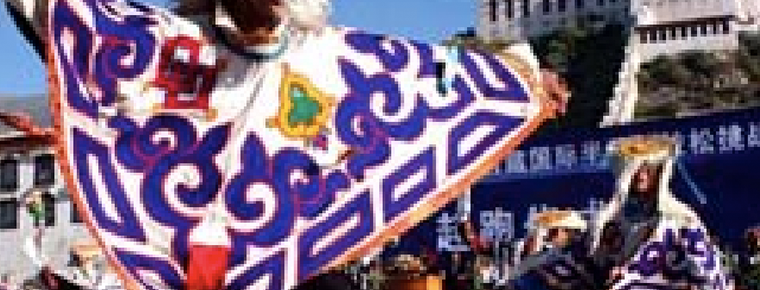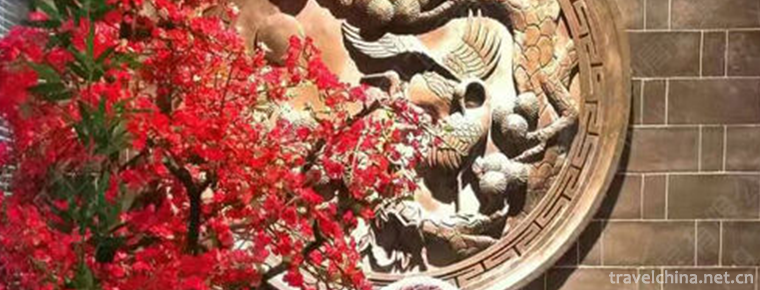Western Qin Opera
Western Qin Opera
Western Qin Opera, a local traditional drama in Haifeng County, Shanwei City, Guangdong Province, is one of the national intangible cultural heritage.
Western Qin opera, also known as "chaotic play", is popular in Haifeng, Lufeng, Chaoshan, southern Fujian and Taiwan. Western Qin Opera flowed into Hailufeng in the northwest of the Ming Dynasty, and combined with local folk art, and formed Western Qin Opera in the early Qing Dynasty. The musical tune of Western Qin Opera is a slab variation of Qi dialect's dual sentences. The tunes can be divided into four categories: the main line, Xipi, Erhuang and minor. The performance style is bold and bold, vigorous and passionate, and is good at martial arts. Its martial arts skills are based on the martial arts of the Fanan School.
On May 20, 2006, Western Qin Opera was approved by the State Council of the People's Republic of China to be listed in the first batch of national intangible cultural heritage, numbered IV-47.
historical origin
Western Qin Opera spread in China in Ming and Qing Dynasties. In the Qianlong Period of Qing Dynasty, Wu Changyuan wrote "Yanlan Xiaopu", which is called "Gansu Tune" and "Western Qin Opera".
It is said that in the 21st year of Jiaqing (1816 A.D.), there were the repertoires and the ink marks of the names of the actors performed by the "Bingzi Shun Taiyuan" troupe at the stage of Beiguan Emperor Temple in Jieshi Town, Lufeng County. Shuntaiyuan Class is one of the three famous classes of Haifeng Western Qin Opera. The performances recorded are "Striking Golden Branches", "Jinxiangting", "Drunken Princess" and so on.
Legend has it that during the reign of Daoguang, Haifeng County was the master of Huang Han's Eastern Bamboo Branch Ci. It was said that "Xie Shen, a villager in October, had better sing the Western Qin Dynasty in the Pear Garden." The voice capacity is nearly Xinghuadan, not Dongshi. It reflects that the West Qin Opera had its own famous actors at that time.
When Xianfeng rebuilt Marshal Tian's temple in Chaozhou in 1860, Banleshi decided to pay homage to the gods of "silver duality per class per year in the Western Qin Ban". It was the people in Chaozhou and other places who regarded the Western Qin opera as a grand drama.
At the end of the Qing Dynasty, most of the performances of Western Qin Opera were performed in the "Fulao" dialect area east of Huidong County. In order to compete with other operas, a large number of pure Kebai or Kebai-based outline operas were developed, such as "Qinqiong Down the Bronze Banner" accompanied by big bangs and drums, gongs and cymbals. It's very popular. At that time, the performance repertoire of Western Qin Opera was divided into two categories: Wen Opera and Wu Opera. The main repertoires of literary drama are "Four Big Bow Circus" and "Thirty-six Heads". Martial arts, such as "Seventy-two Outlines", are multi-source romance novels. Martial arts belong to the Southern School of Martial Arts. The roles and scenes are collectively called "five elements and ten pillars". They are red face, black face and ugly face. They are Zhengdan, Huadan, blue shirt and mother-in-law's feet, Laosheng, Wensheng, Gongduo, Ukrainian and Red Army of the Banner Army, Wenbian and Wubian of the Music Line.
Before and after the 1911 Revolution, some theatre troupes made a living in Guangzhou and Hong Kong. Shuntaiyuan, Shuangfuhe, Saifeng and Qingtaichun troupes also traveled to Southeast Asia to perform. Although the popularity of outline opera has also created a number of versatile actors, the improper compilation has also led to the loss of many traditional literary plays, performances and singing arts.
In 1925, a vigorous Peasant Movement broke out in Haifeng and Lufeng Counties. Artists from the two counties jointly established the Pear Garden Trade Union. The artists turned over and jumped into the revolutionary storm. Later, the revolution failed. The Western Qin opera artists were severely persecuted and destroyed, and the opera troyed gradually. In 1941 and 1945, the Japanese invading army occupied Hai and Lufeng counties twice, together with the great famine in 1943, which made the Western Qin Opera almost desperate. During the War of Liberation, disasters continued. The professional theatre troupes of Western Qin Opera decreased sharply from more than 30 at most (and more than 50 folk choirs), to only three classes, namely, Xinshun Taiyuan, Qingshou Nian and Qingfeng Nian, and were on the verge of disintegration.
After the founding of New China, the surviving veteran artists Zhang Hanbiao, Luo Zongman, Zeng Yuechuan and famous actors Luo Hanbiao, Sun Junde and Tang Tuo gathered together under the support of the cultural departments of the People's Government to celebrate the anniversary class. They performed in Hong Kong and Guangzhou in 1950 and 1951. In 1956, the veteran artists recorded and sorted out more than 70 traditional dramas, such as Rengui Huiyao, Chongtai Bie, Liu Xixunzi, Songjiang Killing Cherish, Examining Feng Xu, Chopping Zhengen En and Xutang Dali Feng. They absorbed a group of female students to study in class, reformed and improved their singing, performance and dancing beauty. At the same time, they renamed the troupe as Xiqin Drama Troupe of Haifeng County. In 1961, the troupe sent actors and musicians to study and exchange in Shaanxi Opera Theatre. After their return, the troupe promoted the artistic innovation of Western Qin Opera, and laid the foundation for the later compilation of new plays such as "Goodman's Plan", "Iron Sun Tzu" and "Red Village Fire". Just as the Western Qin Opera marched forward, the troupe was disbanded in the "Cultural Revolution". In 1978, the Western Qin Opera Troupe of Haifeng County was rebuilt, and the Western Qin Opera was reborn.
Cultural characteristics
Music
The singing and Bai of Western Qin Opera follow Zhongzhou rhyme. Men and women sing in different tones with the same tone. Men sing in real voice and women sing in false voice. The musical tune of Western Qin Opera is a slab variant of the dual sentence of Qi dialect. The main tunes include the main line tune, Xipi, Erhuang, and a small number of minor tunes and Kun tune. The main tone of Western Qin Opera is the main line tune. The tune is magnificent and euphemistic, with unique charm. It can be divided into two sides, flat plate and bangzi. The main line opera accounts for two-thirds of the Western Qin Opera, so it has always been regarded as the main tune of the Western Qin Opera. The repertoire pays equal attention to singing and reading. Xipi tune is rough and intense, suitable for expressing hot, exciting and nervous moods, and is the main aria of the "36 headlines" of Western Qin Opera. Erhuang melody is vigorous and graceful, the melody fluctuates greatly and the rhythm changes more. The reverse line of Erhuang, known as "Yin Tune", is often used to express sad and sad feelings. Its melodic style is unique, and it is a common singing tune for female actresses.
Orchestra
The Western Qin Opera Orchestra consists of eight people, collectively known as "eight chairs", namely board, drum, gong, cymbal, head blowing, second blowing, head string (also violin Hu), moon string (that is, moon qin, also three strings); and is divided into "Wenbin" and "Wubin". "Wenbian" uses head string, second string, three strings, yueqin, suona, trumpet and other instruments. Its stringed instruments are also known as "eleven lines", namely, two lines of head string, two lines of cello hu, three lines of three strings and four lines of month string. "Wubian" mainly uses percussion instruments such as gongs and drums. The accompaniment music of Western Qin Opera is divided into instrumental music and gongs and drums. The instrumental music is divided into two parts: the big gong and drum brand and the accompaniment. The Gong and drum are divided into three categories: the main line Gong and drum, the Ding Gong and the Su Gong and drum.
Performing Style
The performance style of Western Qin Opera is bold, vigorous and vigorous, and good at martial arts. Its martial arts skills are based on the southern martial arts. The roles of Western Qin Opera are divided into "face-to-face line", "head-to-head line", "net braid line" and "banner march". Among them, "face-beating" includes red face, black face, ugly and so on, "head-beating" includes Zhengdan, Huadan, blue shirt, mother-in-law's feet, and "net braid" includes Laosheng, Wensheng, Wusheng, Gongduo and so on. The "banner march" includes the Ukrainian Army and the Red Army.
Foot color
The roles of Western Qin Opera are divided into "face-beating", "head-beating", "net braid" and "banner march", "face-beating" includes red face, black face, ugly, etc.; "head-beating" includes Zhengdan, Huadan, blue shirt, mother-in-law foot, etc.; "net braid" includes Laosheng, Wensheng, Wusheng, Gongmo, etc.; "flag march" includes the Ukrainian Army, the Red Army, etc.
Representational repertoire
There are more than 1,000 traditional operas in Western Qin Dynasty, among which the most influential ones are Gong Keji, Sanguantang, Jewelry Strings, Horse Traffickers, Thirty-six Head Dramas, Chopping Zheng En, 72 Outline Dramas, Huiyao, Ge Nunniang, Qin Xianglian, Zhao's Orphans, Traveling to West Lake and so on. It is very popular with the audience.
protective measures
Inheritance value
The artistic factors of the ancient opera West Qin Opera remain in the Western Qin Opera, which is a living evidence of the evolution of the voice transmission of local operas in the Qing Dynasty, and has high research value.
Current situation of inheritance
There is only one theatre troupe registered in the Western Qin Opera of Haifeng County. There are more than 50 artists. The traditional repertoire and the traditional features of pioneers, percussion music, music cards, props and so on are on the verge of extinction. The lack of talent in performing arts is extremely serious. The rescue and protection work is imminent.
Heritage figures
Lu Weiping, male, Han nationality, born in Shanwei, Guangdong Province in 1966. The second batch of national intangible cultural heritage projects, the representative successor of Western Qin Opera, is the head of the Western Qin Opera Troupe in Haifeng County, Guangdong Province. Lu Weiping's performance is elegant, dignified and generous. He is good at portraying characters'personality with his voice and feelings. His representative works include Liu Xixunzi, Chopping Zhengen En, Xue Rengui Huiyao and Zhao's Orphan.
Yan Mutian, male, born in January 1938, is the representative successor of the third batch of national intangible cultural heritage projects. The declared area is Haifeng County, Shanwei City, Guangdong Province. The representative project is Western Qin Opera.
protective measures
In 2006, the Western Qin Theatre Troupe was listed as a national intangible cultural heritage protection unit. The troupe vigorously excavated traditional operas and performing arts, which played a role in promoting the protection of Western Qin Opera.
social influence
Important activities
On the evening of May 30 and 31, 2018, Ma Yuanfubo, the only outstanding Western Qin Opera repertoire selected by Guangdong Province as the "National Grass-roots Theatre Performance 2018", was performed at Mei Lanfang Grand Theatre in Haifeng County.
On October 26, 2018, the 2018 Grand Ceremony of Hundred Opera (Kunshan), sponsored by the Art Department of the Ministry of Culture and Tourism and the Jiangsu Provincial Department of Culture and Tourism, opened in Kunshan, where the traditional Western Qin Opera was displayed.
Honorary recognition
The Western Qin Opera performed by Lu Weiping, a representative successor, was selected to participate in the Shanghai World Expo.
Lu Weiping, a representative inheritor, won the gold medal in the Chinese Quyi Exhibition for his opera "Liu Xixunzi". Lu Weiping won the "Five-One Project" award in Guangdong Province for his rehearsal of "Retaining Danxinzhao History". Lu Weiping ranked third in the Chinese Quyi Exhibition.
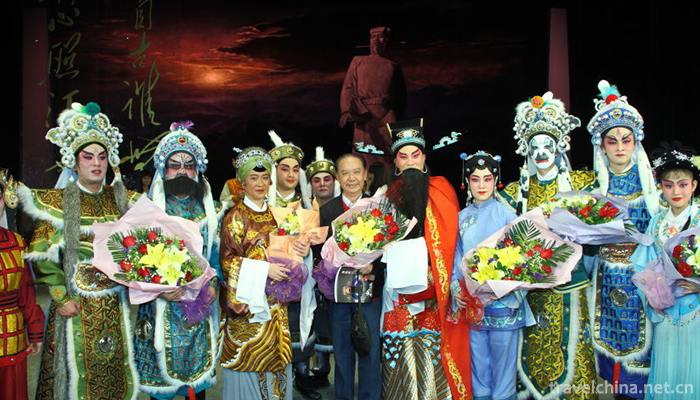
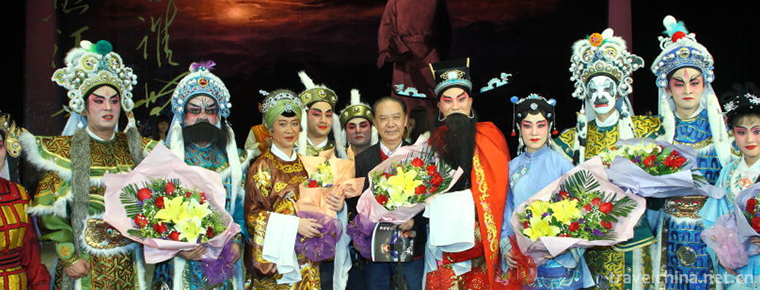
Western Qin Opera
-
Shenzhen Overseas Chinese Town Tourist Resort
Shenzhen Overseas Chinese Town, located in the Rhododendron Hill of Shenzhen Overseas Chinese Town, is the latest generation of large theme parks built by the Overseas Chinese Town after the splendid
Views: 140 Time 2018-12-12 -
Beijing Hotel
Located in the center of Beijing, Beijing Hotel is adjacent to the former Imperial Palace and Forbidden City. It can reach Tiananmen, the Great Hall of the People
Views: 256 Time 2018-12-14 -
Zhongba Grand Canyon Scenic Area
Shiquan Zhongba Grand Canyon is located in the southern side of the Hanjiang River in Shiquan County, Shaanxi Province. It is 20 kilometers away from the county town
Views: 141 Time 2018-12-22 -
Jiao Yulu Memorial Park
Jiao Yulu Memorial Park (formerly Jiao Yulu Martyrs Cemetery) was built in February 1966. It is located on the old embankment of the Yellow River in the north of Lankao County, Kaifeng City
Views: 166 Time 2019-01-22 -
Jade Buddha Garden
Yufo Garden is a famous tourist attraction in Anshan. It is located in the core scenic area of Yufo Mountain. It covers an area of 270,000 square meters. It is surrounded by mountains on three sides a
Views: 114 Time 2019-03-06 -
Zizhuyuan Park
Zizhuyuan Park is located in the West Third Ring of Beijing, near Baishiqiao in Haidian District, west of Beijing Capital Stadium. Zizhuyuan Park was built in 1953. It was named for the Ming and Qing
Views: 276 Time 2019-03-22 -
Pingyao Pushing Lacquerware Decoration Techniques
Pingyao polishing lacquerware decoration technology originated in Pingyao County, central Shanxi Province, and spread to the vast northern region. Lacquerware made with this technique has been well kn
Views: 148 Time 2019-06-09 -
Shangdang Laozi
Shangdang Laozi is one of Shanxi local operas. It is a kind of opera popular in southeastern Shanxi. Shangdang Laozi is a tributary of Wu'an Laozi in Hebei Province. During the Daoguang period of the
Views: 389 Time 2019-06-13 -
Harmonic Qin
In the history of Harmonious Qin, young men and women in Nima Township, Bango County, Naqu Prefecture, Tibet had a tradition of gathering to dance Harmonious Qin. Whether it was the end of farming or
Views: 302 Time 2019-07-06 -
Brick carving
Brick carving refers to the carving of landscape, flowers, figures and other patterns on green bricks. It is an important art form in ancient architectural carving. The production technology and core
Views: 250 Time 2019-08-10 -
Liushi Manorial Museum
Dayi Liushi manoral museum is located at No.15, Jingui street, Anren Town, Dayi County, Chengdu City, Sichuan Province. It is one of the important historical sites and representative buildings in modern China.
Views: 200 Time 2020-11-05 -
Natural resources of Panzhihua
Panzhihua is rich in hydropower resources, with theoretical reserves of more than 6.879 million kilowatts and exploitable capacity of 5.994 million kilowatts. The distribution of hydropower resources in Panzhihua area is concentrated, mainly distributed in the Jinsha River and Yalong River, as well as the tributaries of Anning River, Yongxing River and Tengqiao river.
Views: 302 Time 2020-12-14
